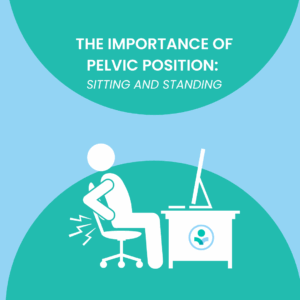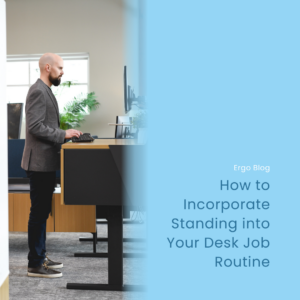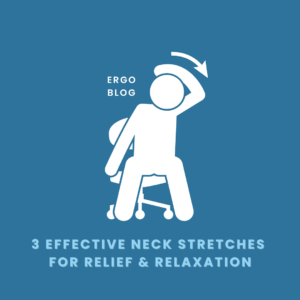Updated: May 11, 2023
Ergonomic Tips for Tennis Elbow
Chronic injuries to your muscular and skeletal system due to unsafe body mechanics and positioning or repetitive motions are considered musculoskeletal disorders (MSD’s). These types of disorders show up in the ergonomic world a fair amount of time. Our goal is to prevent these disorders from happening so you can live a happier and healthier life.
There are many types of MSD’s that can affect your body from your head/neck to the toe. One of these disorders is called tennis elbow. In the medical world, we call this lateral epicondylitis. Lateral means the side that is away from the body. Epicondyle is a protuberance above or on the condyle of a long bone; in this case at the elbow end of the humerus. The medical term for inflamed is -itis.
What is Tennis Elbow (Lateral Epicondylitis)?
Tennis elbow is a condition where the tendons in your elbow become inflamed and painful, oftentimes from repetitive motions of the wrist and arm. Other studies suggest that there isn’t an exact cause of tennis elbow.
You don’t necessarily have to be playing tennis to get tennis elbow. The repetitive tasks that sometimes occur throughout our week, whether at work or at home, can lead to tennis elbow. Possibly causes of tennis elbow include sports such as tennis, rowing, or strength training. Manual labor that involves painting, carpentry, and other jobs that involve repetitive turning. Heavy lifting may be a culprit of tennis elbow. Playing the piano, typing on a keyboard, or working at a cash register where hands are pronated (palms down) can also exacerbate tennis elbow.
The location of the pain point is fairly specific. It usually occurs where the tendons of the forearm attach to the bony prominence (or bump) on the outside of the elbow. With pain originating at this point, some people may also experience pain that spreads into the forearm and wrist. Pain also occurs on resisted dorsiflexion of the wrist, middle finger, or both.
Pain that is associated with tennis elbow can affect one’s performance in their daily work and day-to-day tasks such as shaking someone’s hand, gripping an object, turning a doorknob, and/or holding a cup of coffee.
Treatment
The first step to reduce symptoms of tennis elbow is to rest and use an ice pack. When applying ice to your skin, always keep a cloth between your skin and the ice pack to avoid frostbite. Do not ice for more than 15-20 minutes at a time.
Resting can take time, sometimes a few weeks. Avoid any activities that aggravate your symptoms.
As far as ergonomics goes, be mindful of your positioning. Always keep your upper extremities in your comfort zone for common activities. This means that your elbows should be close to your sides with your elbows bent to 90-100 degrees. Keep your wrists and hands in a neutral position as well. Imagine holding a cup of water. The position that your hand is in while holding a cup of water is a neutral position.
Office Workers
- Keep your keyboard and mouse 1-2 inches below your elbow height. This can be accomplished by lowering a height-adjustable desk or using a height-adjustable pull-out keyboard tray.
- Use an upright or adjustable keyboard and mouse, especially one that promotes a neutral hand position.
- Avoid squeezing your mouse too tightly. Your hand should gently rest on your mouse with the larger shoulder muscles doing most of the movement of your mouse.
Hand Tools
- Use hand tools that promote a neutral hand position. For example, standard pliers can put your hand in an awkward position with increased ulnar deviation. Instead, opt for pliers that have a modified handle with the handles angled to allow for a more neutral grip and hand position.
- Make sure the handles of hand tools are able to support a power grip. If the handle is too small then more force is needed to grip the small tool. The recommended diameter for an optimal grip is 1.25 – 2 inches. The larger diameter will allow for maximum torque, while the smaller diameter helps with dexterity and speed.
- Use power tools instead of hand tools. Plumbers are oftentimes using a hand tool called a crimper where high forces of gripping are needed. Instead of manually crimping pipe, another option would be to implement the use of a power tool such as a press tool which would greatly reduce, if not eliminate repetitive gripping and squeezing.
Daily Tasks
- Practice good habits when using your cell phone. Use holders on the back of the cell phone and use two hands if the phone is too large to hold with one hand. Refer to [this blog] for more information on handling.
- When driving, hold onto the steering wheel at 9 and 3, 8 and 4, or 7 and 3 to avoid awkward hand positioning. Our motor vehicle operators blog has more ergonomic tips when it comes to driving.
- If you are meal-prepping with repetitive chopping motions while using a knife, consider using a rocker knife, mezzaluna, or another knife with a T-shaped handle.
If you continue to experience pain in the lateral aspect of your elbow talk to a doctor or physical therapist. Addressing your concerns sooner rather than later is always important. An early case of tennis elbow will heal much more quickly than one that has been present for a longer period.
Check out our YouTube video below for a visual representation of the blog!



